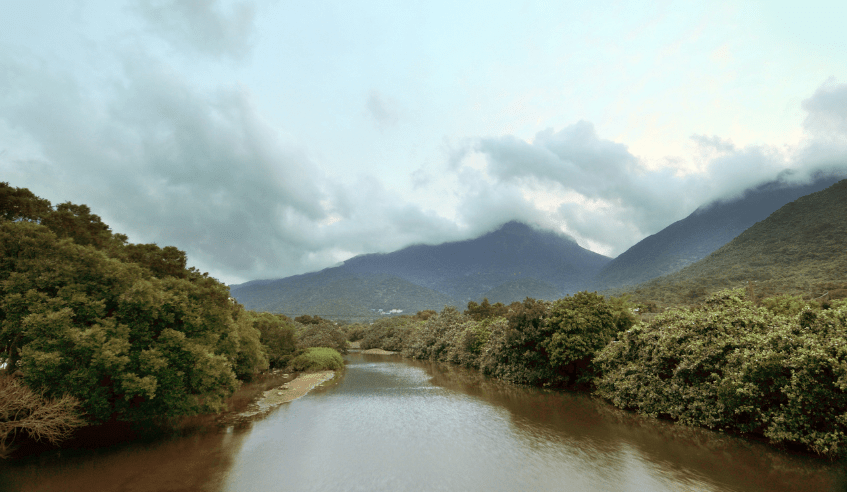REPORTING BY Ray Au PHOTOS BY Terry Chow
Despite ongoing construction, Tung Chung remains unexpectedly and importantly biodiverse. Much of Tung Chung Valley is forested with native trees and there are several Chinese geomantic woodlands, which have been planted by villagers to improve the feng shui in the area. Likewise, Tung Chung River, its estuary and coastal areas serve as a green lung for residents and provide varied habitats for precious flora and fauna.
Tung Chung River largely retains its natural state from Lantau and Sunset peaks all the way down to the shallow estuary in Tung Chung Bay. It is one of the few rivers in Hong Kong with good water quality, and as such it is one of the major rivers supplying Shek Pik Reservoir. Moreover, Tung Chung River has high ecological value with many species of native freshwater fish recorded, including the Beijiang Thick-lipped Barb. The banks of the river are home to various endemic amphibians, like Romer’s Tree Frog and the Hong Kong Newt.
Tung Chung Estuary, meanwhile, harbours mudflat, mangrove, saltmarsh and seagrass habitats. It’s home to various valuable plant and animal species, including two rare horseshoe crab species the Chinese Horseshoe Crab and Mangrove Horseshoe Crab. Crabs, seahorses, sea dragons and a number of commercially valuable fish species reproduce and nurse their young at Tung Chung Bay. The bay is also a foraging ground for some important wetland bird species like Swinhoe’s Egret and the Pacific Reef Egret.
While Tung Chung remains biologically rich, it has fast become a biodiversity hotspot, threatened by human habitation. As the town continues to expand, there are hard choices to be made around the balance between conservation and development. To bolster protection of the area, green groups are calling for the expansion of the proposed Tung Chung River Nature Park as a public amenity for leisure, recreation and appreciation of nature.

